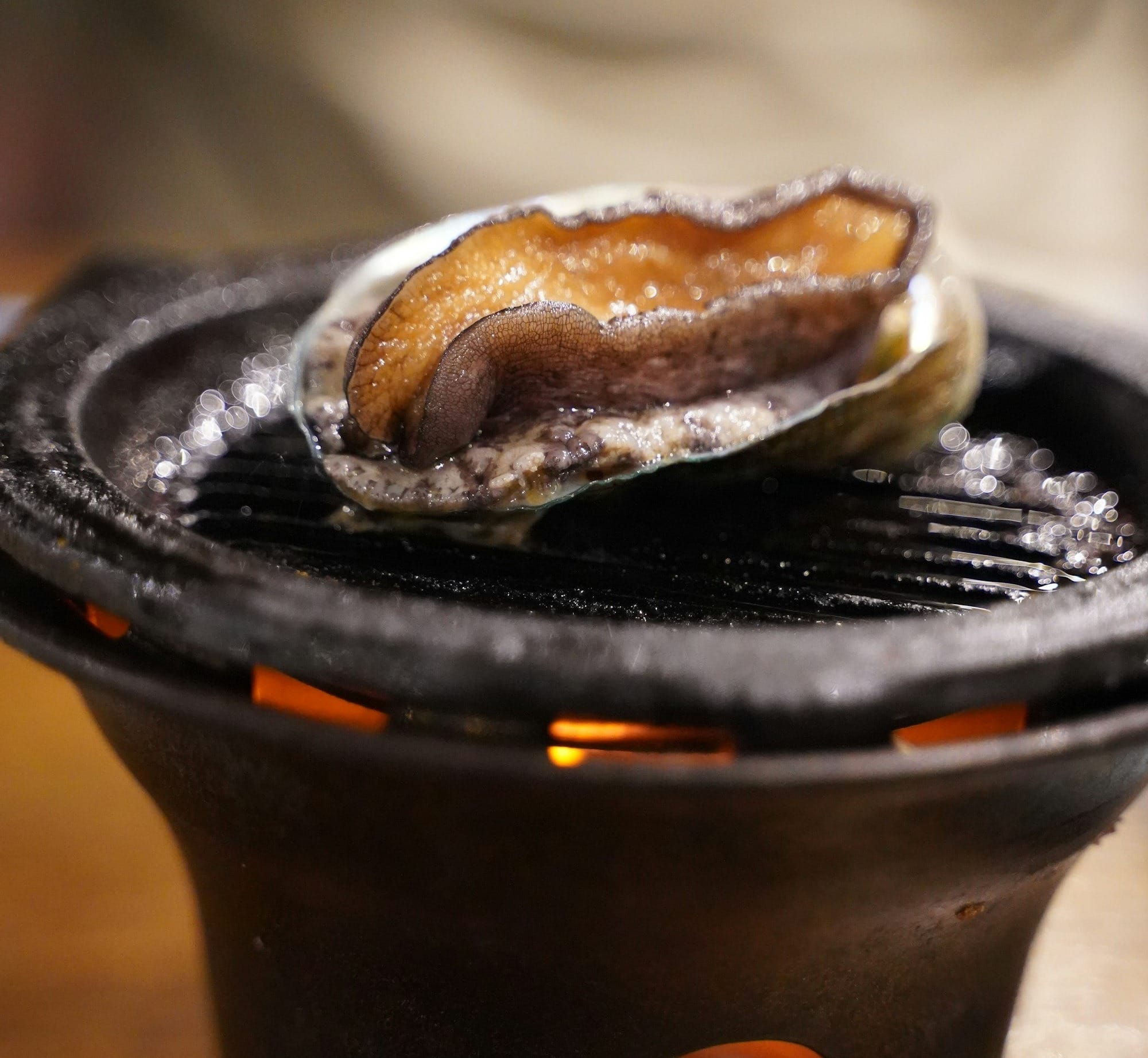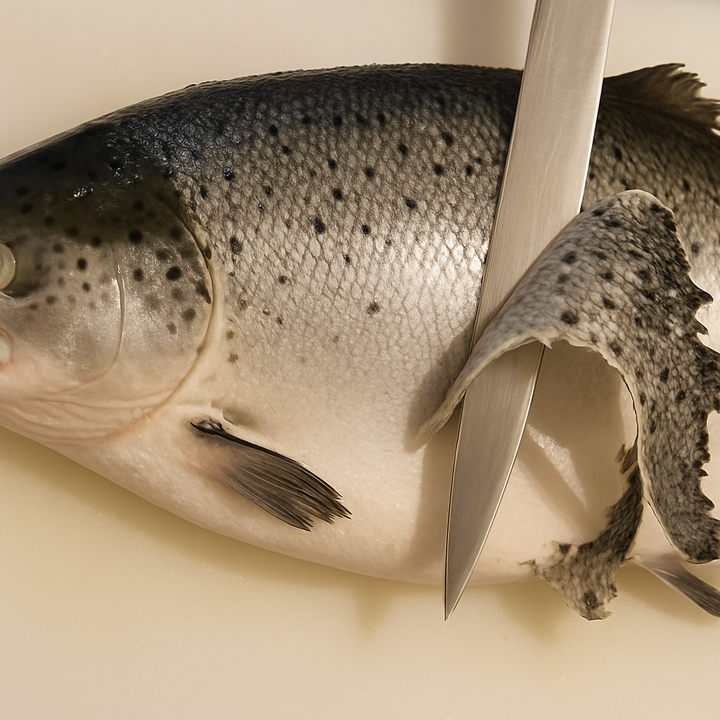Global Abalone Recipes: Traditional & Modern Methods
Discover the delicate flavors of abalone through diverse culinary traditions, from Asian steaming techniques to Mediterranean grills. Learn how chefs transform this prized shellfish into extraordinary dishes.

Abalone is a popular seafood enjoyed across many countries, with each culture having its own special way to cook it.
This tasty shellfish has a sweet, ocean flavor and a unique texture that people love.
From Japan to California, cooks have created many different abalone dishes that show off local cooking styles.
In this guide, we'll explore how people prepare varieties of abalone in different parts of the world, from simple raw preparations to complex braised dishes.
In this food journey, we'll look at the many ways to cook abalone in different countries.
Each recipe shows something important about that culture's cooking style—like how Japanese cooking keeps natural flavors, how Korean dishes focus on health benefits, or how Chinese recipes create special textures and represent good fortune.
For food lovers and travelers, learning about these different cooking methods gives you new recipes to try at home and helps you understand more about each culture's food traditions.
The Prized Mollusk: Understanding Abalone
Before diving into cultural preparations, it's important to appreciate what makes abalone so special.
This single-shelled marine gastropod mollusc grows attached to rocky surfaces in coastal waters around the world.
The meat—actually the muscular foot of the animal—is known for its firm yet tender texture that, when properly prepared, can range from buttery soft to pleasantly chewy.
Abalone is notoriously difficult to harvest and has become increasingly rare due to overfishing, making it one of the most expensive seafood ingredients in the world.
Many countries now have strict regulations on wild abalone harvesting, with farming operations becoming more common to meet demand while protecting wild populations.
East Asian Preparations

Japanese Abalone (Awabi)
In Japan, where abalone is known as "awabi," the approach to preparation often follows the country's culinary philosophy of highlighting, rather than masking, an ingredient's natural qualities.
Japanese cuisine treats abalone with particular reverence, considering it one of the traditional "high-end" ingredients.
1) Abalone Sashimi (Awabi Sashimi): Perhaps the purest expression of abalone appreciation is sashimi. Live abalone is expertly removed from its shell, cleaned, and thinly sliced.
The translucent slices—revealing a gradient of creamy white to light brown—are typically served with a simple accompaniment of wasabi and soy sauce.
The texture is remarkable: simultaneously firm, tender, and slightly crunchy.
This preparation allows diners to experience the pure, sweet oceanic flavor that makes abalone so prized.
Many high-end restaurants serve abalone sashimi with the liver, considered a delicacy in its own right with a rich, creamy texture and intense marine flavor.
Some chefs lightly poach the liver to serve alongside the raw meat, creating a study in contrasting textures and flavors from the same animal.
2) Steamed Abalone (Awabi no Shioyaki): Another traditional preparation involves steaming abalone in sake and a small amount of salt, often in its own shell.
This gentle cooking method preserves the abalone's natural sweetness while softening its texture.
The resulting dish showcases the Japanese principle of simplicity—allowing quality ingredients to speak for themselves with minimal intervention.
3) Abalone in Kaiseki Cuisine: In formal kaiseki cuisine, abalone might appear as part of a meticulously arranged hassun (seasonal platter) or as a standalone dish simmered in a subtly flavored dashi broth.
When cooked this way, the abalone absorbs the umami-rich flavors of the broth while maintaining its distinctive texture.
Chefs might simmer it for several hours at precisely controlled temperatures to achieve the ideal tenderness without sacrificing flavor.
Korean Abalone (Jeonbok)
Korean cuisine approaches abalone (jeonbok) as both a luxury ingredient and a health-promoting food with medicinal properties. Korean preparations often focus on extracting maximum nutrition and flavor through slow cooking methods.
1) Abalone Porridge (Jeonbokjuk): Perhaps the most famous Korean abalone dish is jeonbokjuk, a creamy rice porridge enriched with finely chopped abalone and its internal organs.
Traditionally prepared for special occasions and for those recovering from illness, this porridge is valued for its nutritional properties and easy digestibility.
The preparation begins with soaking short-grain rice, then simmering it with abalone that has been cut into small pieces.
The visceral organs (known as "guts" or "innards") are often included for their flavor and nutritional content.
As the porridge cooks, the abalone releases its essence into the rice, creating a dish that's simultaneously luxurious and comforting.
The finished porridge is typically garnished with sesame oil, slivers of jujube (Korean dates), and pine nuts.
2) Abalone Hot Pot (Jeonbok Jeongol): Another beloved preparation is abalone hot pot, where slices of fresh abalone are cooked tableside in a bubbling broth alongside vegetables, mushrooms, and other seafood.
The broth, often made with kelp and anchovies, creates a suitable backdrop for the abalone's subtle flavor.
This communal dining experience allows diners to cook the abalone to their preferred level of tenderness.
3) Raw Abalone with Sesame Oil (Jeonbok Hoe): Similar to Japanese sashimi but with a Korean twist, jeonbok hoe features raw abalone sliced and served with a dipping sauce of sesame oil mixed with salt and sometimes a small amount of gochugaru (Korean chili flakes).
The nutty richness of the sesame oil complements the clean, oceanic flavor of the raw abalone.
Chinese Abalone (Bao Yu)
In Chinese cuisine, abalone (bao yu) holds a position of extraordinary prestige. As one of the "Four Treasures of the Sea" alongside shark's fin, sea cucumber, and fish maw, abalone features prominently in celebratory and banquet cooking. Chinese preparations often involve long, careful braising to transform the initially tough meat into something gloriously tender.
1) Braised Abalone with Oyster Sauce: This classic Cantonese preparation begins with dried abalone, which must be meticulously rehydrated over several days through repeated soaking and gentle simmering.
The rehydrated abalone is then braised in a complex sauce typically containing oyster sauce, soy sauce, Chinese Shaoxing wine, and aromatics like ginger and scallions.
The braising liquid is repeatedly reduced and added back to create layers of flavor.
The finished dish—featuring whole abalone glazed in a richly reduced sauce—is often served with tender braised vegetables like Chinese cabbage or mushrooms.
The texture achieved through this method is remarkable: tender enough to yield to a chopstick but still maintaining a pleasant resistance that speaks to the ingredient's luxury.
2) Abalone with Supreme Broth: In high-end Chinese restaurants, particularly in Hong Kong, abalone might be served in a "supreme broth"—a clear yet intensely flavored liquid made from chicken, ham, pork, and various dried seafood products simmered for hours or even days.
This preparation highlights not only the chef's skill but also the restaurant's willingness to invest significant time and resources into a single dish.
3) Abalone in Fortune Soup: During the Lunar New Year and other important celebrations, abalone often appears in "fortune soup" or "prosperity soup" alongside other symbolic ingredients like dried oysters (representing good business), black moss (resembling hair and symbolizing prosperity), and dried mushrooms (representing growing fortune).
The presence of abalone in these special soups signifies abundance and good fortune for the coming year.
Western Preparations
Mediterranean-Inspired Abalone
In regions with access to fresh abalone like Italy, France, and Spain, preparations tend to highlight the ingredient with bold Mediterranean flavors.
1) Abalone Meunière: Drawing inspiration from the classic French preparation for fish, abalone meunière involves dredging thinly sliced and tenderized abalone in flour, then quickly sautéing it in butter until golden.
The dish is finished with lemon juice, parsley, and additional butter to create a simple yet luxurious sauce. This preparation allows the natural sweetness of the abalone to shine while complementing it with the nutty richness of browned butter.
2) Abalone with Garlic and Herbs: In the Mediterranean style, abalone might be quickly cooked with abundant olive oil, garlic, white wine, and fresh herbs like parsley and thyme.
This preparation creates a flavorful sauce perfect for sopping up with crusty bread while allowing the abalone to remain tender and not overcooked.
California and Mexican Abalone Traditions
Before overharvesting led to strict regulations, the California coastline was renowned for its abundant red abalone. Both California cuisine and northern Mexican cooking developed distinctive approaches to this local treasure.
1) Abalone Steaks: The classic Californian preparation involves pounding sliced abalone to tenderize it (essential for the tougher local species), then breading and quickly frying the resulting "steaks."
This method transforms the potentially tough meat into something tender, with a crisp exterior giving way to a succulent interior.
The fried steaks are typically served simply with lemon wedges and tartar sauce, allowing the distinctive flavor to take center stage.
2) Abalone Ceviche: In coastal Mexico, particularly in Baja California, abalone might be prepared as ceviche.
Fresh abalone is sliced paper-thin and "cooked" in lime juice, then mixed with onions, cilantro, chiles, and sometimes tomato.
The acidity of the lime transforms the texture of the raw abalone while preserving its oceanic freshness. This preparation showcases the Latin American talent for balancing bold flavors with delicate seafood.
Oceania
New Zealand and Australian Abalone (Pāua)
In New Zealand, abalone (known as pāua, specifically the species Haliotis iris) holds cultural significance for the Māori people, who have harvested it for generations.
The meat is notably darker than many other abalone species, with a distinctive blue-green iridescent shell that's prized for decorative purposes.
1) Traditional Māori Preparation: Traditional Māori preparation is notably straightforward: the abalone is removed from its shell, tenderized, and either cooked in a hāngī (earth oven) or chopped and incorporated into patties.
These patties, known as pāua fritters, mix the minced abalone with eggs and flour to create a dish that's both everyday comfort food and a connection to cultural heritage.
2) Modern Australian Abalone Dishes: Australian chefs have developed contemporary approaches to their local abalone species, often drawing on Asian influences while using modern techniques.
One popular preparation involves thinly slicing abalone and quickly cooking it on a hot stone or grill, then serving it with native ingredients like finger lime, sea succulents, or wattleseed.
This fusion approach respects traditional Asian methods while incorporating distinctly Australian elements.
Conclusion
Abalone stands as a perfect example of how a single ingredient can inspire diverse culinary traditions across the globe.
From the minimalist Japanese approach that honors the ingredient's natural qualities to the elaborate Chinese preparations that transform it through patient cooking, each cultural tradition offers unique insights into both culinary technique and cultural values.
For the global food enthusiast, exploring these different preparations opens windows not just into cooking methods, but into history, cultural exchange, and relationships with the sea.
And as we appreciate these diverse approaches, we're reminded of our responsibility to ensure that this remarkable mollusk remains available for future generations to enjoy.
Whether you encounter abalone as sashimi in Tokyo, in a comforting porridge in Seoul, braised to perfection in Hong Kong, or as a fried steak along the California coast, you're participating in a global culinary tradition that stretches back centuries—a tradition worth preserving through sustainable harvesting, responsible consumption, and continued cultural appreciation.


